May 26, 2022
8 Sales Acceleration Strategies to Fuel Revenue Growth

- Why you need sales acceleration strategies
- 8 Sales acceleration strategies
- Get ready for liftoff
- FAQs about sales acceleration
Rep burnout is real.
It’s a common scenario: you can see your sales reps are overwhelmed and juggling tons of different tasks. But even still, you’re not getting the results you expected.
Maybe you’ve even hired more salespeople, so you know it’s not an issue of getting more sales reps to work even harder.
Instead, you need to increase their productivity so they can quickly and effectively move more prospects down the pipeline—without burning themselves out.
In an increasingly complex sales landscape, you don’t want your top reps juggling low-value tasks that don’t contribute to converting prospects.
You want to arm your sales reps with the tools and strategies they need to focus on finding and nurturing high-quality accounts and building strong relationships.
We’ve talked to our salespeople and other top sellers to compile sales acceleration strategies you can use to empower sales reps to efficiently and effectively interact and communicate with prospects for better results.
After reading this you’ll:
- Understand how to make your sales reps more efficient and productive
- Know what strategies to implement to move prospects down the sales funnel faster
- Have the tools to develop mutually beneficial, lasting relationships with prospects
Let’s go!
Why you need sales acceleration strategies
Sales acceleration strategies help your sales reps work more effectively at the deal level and beyond. They help reps engage high-quality prospects and automate manual or repetitive tasks, to give them back more customer-facing time.
Unfortunately, too many reps think they’re engaging prospects and accelerating the sales process when they’re actually just prospecting with generic, unpersonalized calls and emails that aren’t relevant to their prospects.
That’s why you need a sales acceleration strategy that allows reps to spend more time with customers, and streamlines workflows with sequences and templates for more effective two-way interactions.
Other benefits to having a sales acceleration strategy include:
- Speeds up prospecting
- Speeds up qualifying inbound leads from marketing
- Improved, more reliable CRM data insights
- Predictable scalable account growth and revenue
- Lazer focus on your ICP
Without a solid sales acceleration strategy, you risk having teams of skilled task-jugglers—not truly effective sales reps.
When sales reps have too much on their plate, they won’t be able to prioritize customer engagement, which affects their ability to close deals. Without a sales acceleration strategy, your reps will likely find themselves:
- Not responding to leads fast enough
- Not sharing leads across departments
- Working from unreliable CRM data
- Lacking systems that support lead nurturing
- Losing motivation
Let’s take a look at some sales acceleration strategies you can use to increase productivity and streamline your sales processes.
8 Sales acceleration strategies
We’ve compiled a list of sales acceleration strategies that help sales reps build trust with potential customers, move prospects through the sales cycle quicker, and streamline their own internal processes to make them more efficient.
Ready to get your sales reps out of the circus? Here’s how:
Strategy # 1: Set—and measure—clear goals
Without defined objectives, it’s easy for sales reps to get sidetracked by all the low-value manual tasks they need to perform on a daily basis, like logging sales activity, call notes, etc.
Set and measure clear goals to give your sales team a concrete plan to achieve their objectives, driving effective sales acceleration.
In other words, you need to be able to see what’s working and what’s not and use those insights to hone your prospecting methods and make your messaging hyper-relevant. This helps build trust with prospects and gives you insight into what could make your internal processes faster.
Sales leaders should set Specific, Measurable, Action-oriented, Realistic, and Time-based goals (SMART goals), to align sales reps around achievable objectives that motivate them to sell more.
For example, if your goal is to increase conversion rates, calculate these at each stage of your pipeline to figure out why they’re not where you want them to be, and take steps to improve.
If your goal is to increase sales productivity, measure how much time your reps spend selling and what needs to be automated or streamlined, to better meet business goals.
It’s also important for salespeople to do personal goal setting, or “sales math”.
Sales math is essentially how you calculate your inputs as a salesperson into the outcomes you need.
But don’t worry—Excel does the math for you.
Sales math helps salespeople understand how many activities they need to do in a day to reach quota in a month or a quarter, giving a granular understanding of the tasks involved and their repeatability, which drives sales acceleration.
Here’s our sales math template, which you can copy and tailor to fit your own needs (depending on whether you have multiple product lines with multiple different goals). It’s a simple template that’s sufficient for 80% of salespeople, so you can better understand your goals, and what actions are required to meet them—which is the first step to making your objectives repeatable and scalable, and accelerating sales.
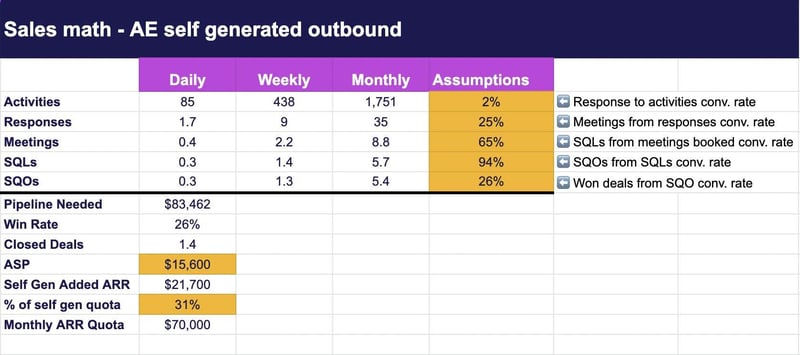
Strategy # 2: Killer research
Strong research and a data-driven approach early on can save reps wasting time with low-quality leads or prospects who aren’t a good fit, which speeds up the sales process for those who are.
Solid research tells you exactly who you’re reaching out to, what they need, what they’re likely to respond to, and how to make communications relevant to their role, pain, and challenges. This helps build rapport and buyer trust with prospects down the line.
You’ll want to begin by creating Ideal Customer Profiles (firmographics of your typical customer company) and buyer personas that are focused strongly on roles and your value proposition. Here’s how:
1. Identify the traits of your ideal customer: Are they ready, keen, and able to buy your product with their current resources? Are they skilled and knowledgeable enough to make proper use of your product? Are they profitable and growing? Are they well-networked and able to become an advocate of your product? Each company will have its own specific ideal customer traits that have greater or lesser importance—knowing which ones to prioritize is a key first step.
2. Research your best customers: Ask your best customers what convinced them to become your customers. What business objectives does your solution help them achieve? What helped them make a decision? Think about all the factors that make them a great fit.
Then look at their demographics: where are they based? How many employees do they have? What are their roles and responsibilities? Who’s involved in the decision-making process? The key thing here is to figure out what your best customers have in common so you can repeat the process with other companies that match.
3. Build a profile: Create a spreadsheet to cover all the data points and insights you’ve gathered. Then, cross-reference and group similar entries, and tag each grouping to represent your ICPs. Use this information to extract multiple ideal customer profiles, always including their needs, responsiveness, ongoing interactions, and emotional connectivity to your brand. Run your prospects through this checklist to see how well they fit.
Then, determine your buyer personas (or the psychology and needs of the person you’re targeting). Using the info gathered during your research, create buyer personas using our buyer persona template. Include roles, responsibilities, and your value proposition.
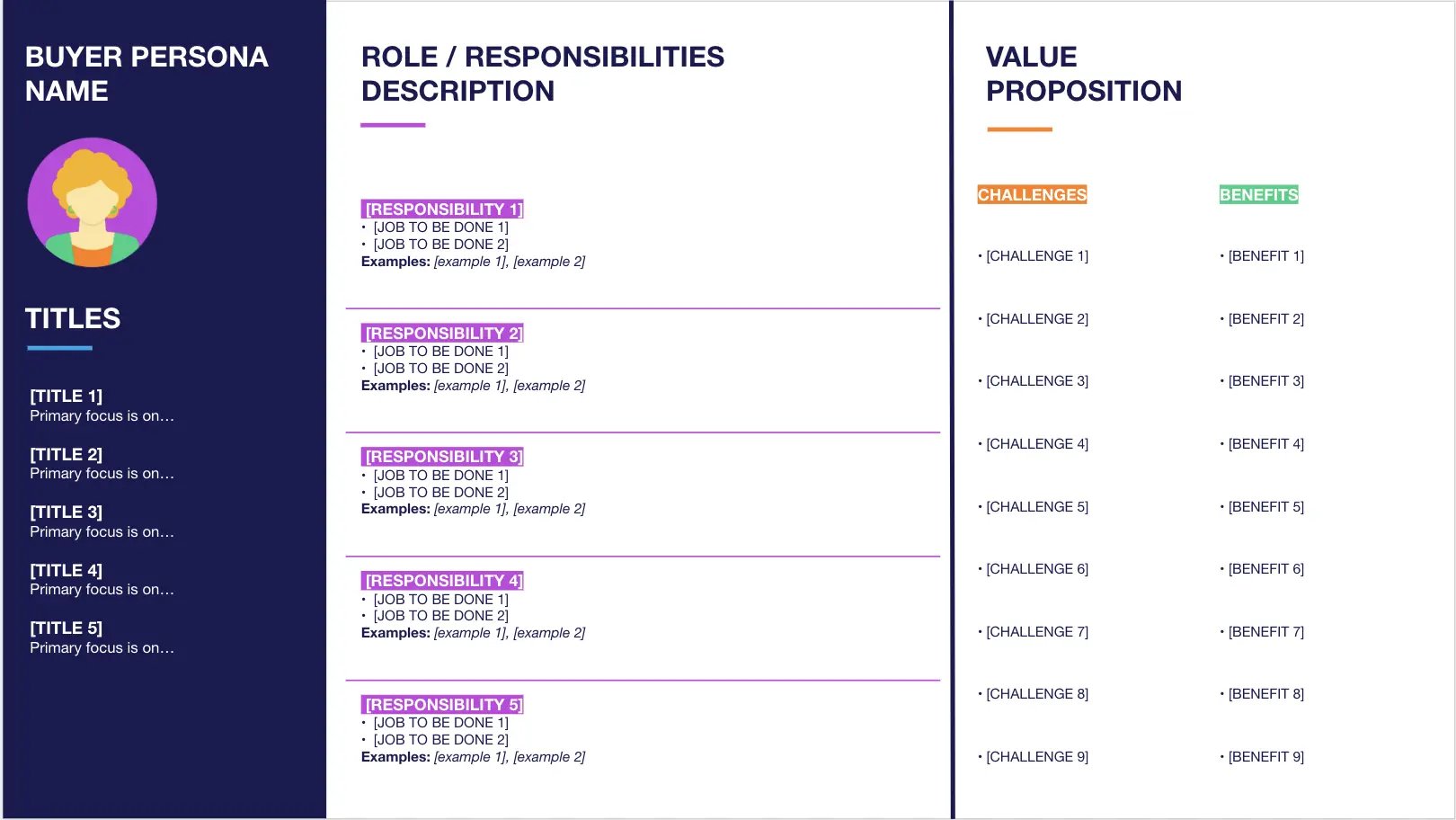
Another important part of doing killer research is using sales prospecting tools.
Prospecting tools speed up the process of profiling and researching customers, and provide you with accurate, rapid, and actionable insights.
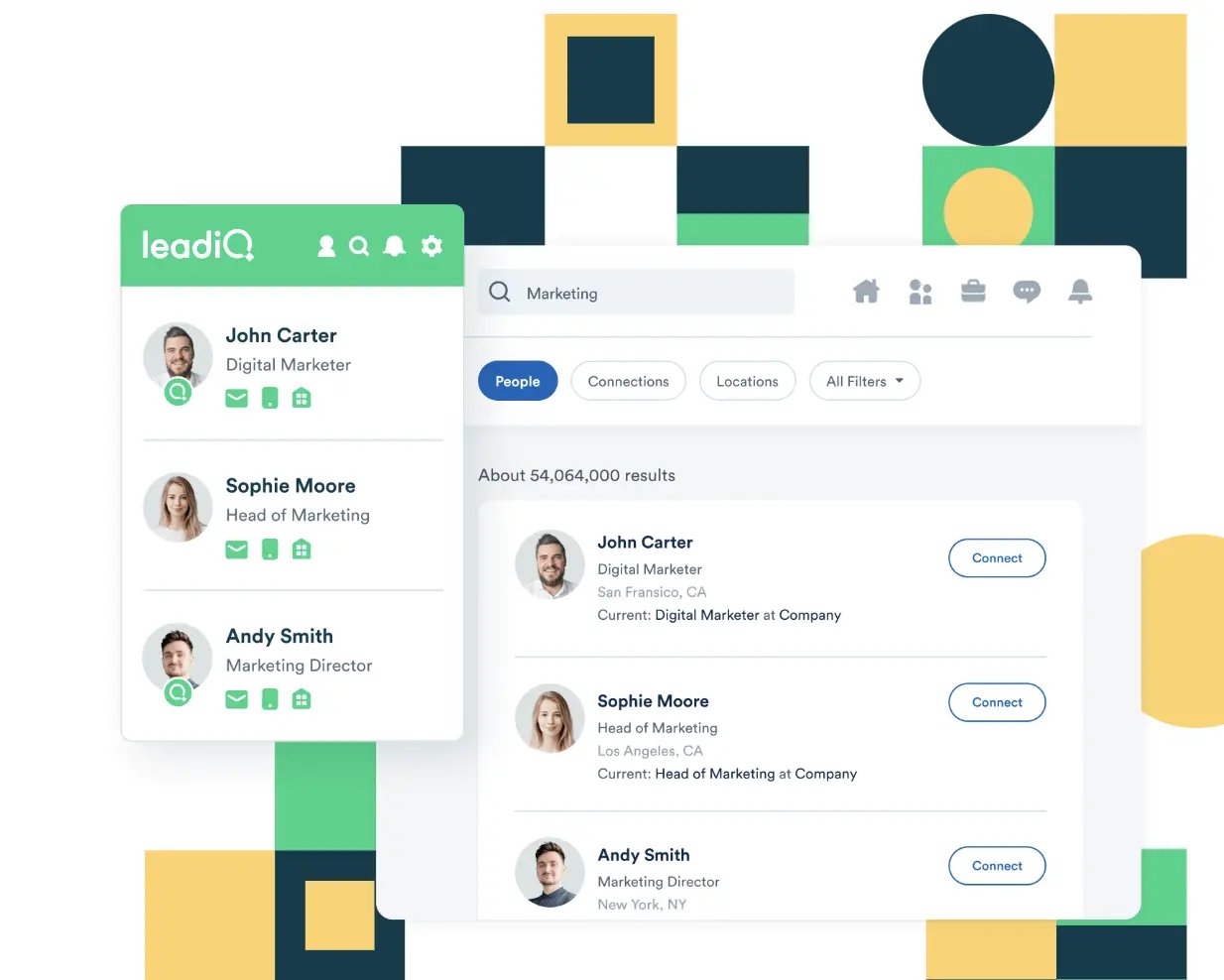
For tracking down high-intent B2B prospects and understanding their pain and challenges, we like:
- LinkedIn Sales Navigator: Identifies and filters millions of LinkedIn users by industry, location, and more, as well as providing access to subscription services like Job Seeker and Learning Access.
- Crunchbase: Account-based sales intelligence tool that allows you to search in-depth information on companies in over 700 industries.
- G2 insights: Go-to platform for B2B SaaS reviews that provides valuable information about prospects’ needs, challenges, and how they’re using competitor solutions.
For building contact lists and researching prospects and prospect companies, we recommend:
- ZoomInfo: Business intelligence tool whose giant database is invaluable for tracking down information and qualifying leads.
- LeadIQ: Helps optimize prospecting workflows by capturing and sequencing lead information in one click.
- Lusha: Locates B2B contacts and company details so you can find and target prospects that match your ICP on websites, LinkedIn, and Gmail.
Use these tools and our tips for researching above to easily connect with prospects and accelerate the sales process.
Strategy # 3: Go deep into pain points
Once you have your ICPs and buyer personas figured out, it’s important to focus your research on deeply understanding your prospect’s pain points and the problems they’re looking to solve with your solution.
Zooming in on your prospect’s pain points from the start accelerates sales, as it helps you focus on value-based, account-based selling—addressing the target company as a whole, not just individual prospects within it. This builds buyer trust: taking the time to get to know your prospects and using that information to tailor your solution to solve their problem will accelerate your sales process in the long run.
Understanding customer pain also helps you focus key sales touchpoints on their specific needs and tailor demos, sales collateral, and proposals to speed up the process.
Once you’ve used the research technique above, focus on getting a deep, granular understanding of your prospects’ pain points.
Here’s how:
- Check out community forums and blog comments, as well as review sites like G2, Reddit, and Quora for invaluable insights into common problems people struggle with, and how your competitors are solving them.
- Analyze their digital footprint: what blog posts have they read? Did they download any whitepapers? Have they engaged with your website, chatbot, or help center? If so, how?
- Examine buyer feedback and reviews (and talk to your CSM): Past buyers of your product are gold for digging into specific pains, and seeing if your product’s helped alleviate them.
- Understand current market trends: Keep track of industry influencers, publications, and research trends.
- Segment your customer personas into specific needs or pains: The more specific your customer personas are, the more you’re able to address their specific needs.
- Do a killer discovery call: ask open-ended and targeted questions designed to uncover your prospect’s unique challenges and get them to book a demo.
Strategy # 4: Build a quality pipeline
Killer sales acceleration involves building a quality pipeline by finding the right people and making sure they’re actually engaging. Here’s how:
1. Understand market focus: Know your customers and how the current dynamic and forces of the marketplace might affect them. Analyze what your competitors are doing right, and how you could do better.
2. Always be prospecting: A healthy sales pipeline is always under construction, so find time (every day or week) to prospect your potential customers and make a routine out of it.
3. Effective outreach: You’ve identified target buyers and built a list of prospects, so now make sure to align your messaging and outreach to successfully build relationships with them. Use customizable Mixmax sequences (more on this below), and sales prospecting email templates that autofill with prospect data from your CRM to quickly and easily personalize outreach at scale.
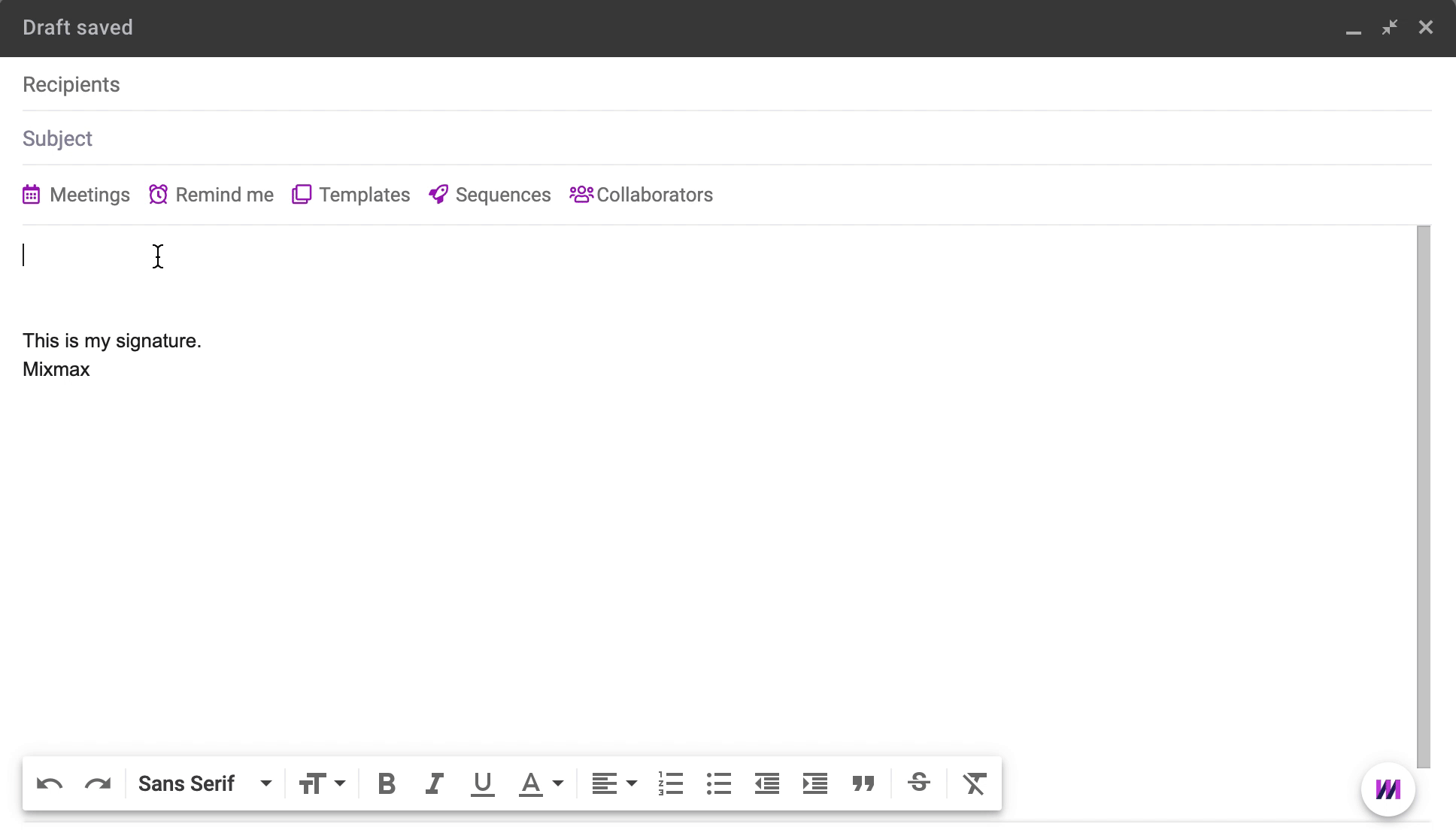
4. Track engagement: Use Mixmax to know who’s engaging with your emails in real-time. It lets you see notifications for recipients who opened, clicked, or replied to your emails, or actions you choose, so you know which prospects are engaging and when’s a good time to follow up. Mixmax lets you set up rules based on engagement—once your prospect’s opened an email a certain number of times, you can get an automated Slack notification or create a call task to stay on top of time-sensitive communication.
5. Setting clear next steps: Once you’ve done all the hard work of researching, prospecting, and reaching out, make sure it isn’t in vain by moving prospects through the pipeline. If you’re using Mixmax, you can quickly share availability to schedule meetings without all the back and forth, and include personal touches and your branding. You simply send available times to your recipient, and they confirm a meeting time directly in the email. Mixmax also helps reps easily build proven processes into a repeatable workflow, automated to prompt the rep to do the correct next task. This makes sure no steps are skipped for more effective sales—and means newer reps can follow the prompts and speed up their ramp time to accelerate sales.
Strategy # 5: Build trust & credibility
Spending time building strong relationships and trust helps prospects move through the sales cycle faster. They’re more likely to buy if they’re confident about your company and your solution’s ability to address their needs.
But prospects are used to sifting through—and ignoring—generic, impersonal sales emails that don’t speak to their pain, so you’ll need to work harder to gain their trust.
There are a few ways you can convey authenticity and build trust:
- Sell solutions, not products: Take the time to understand how your solution will help your prospects’ specific needs. Never feature-dump on them with irrelevant information that doesn’t relate to their problem.
- Listen more than you talk: When you’re on a discovery call, for example, follow an 80-20 ratio. This establishes trust and gives prospects enough space to go deep into their situation and enrich the conversation.
- Validate their choices: Let your prospects feel their pain and don’t rush in with a band-aid solution. The more authentic and genuine you are about hearing them out, the more likely they are to trust you.
- Use their language: Once you’ve picked up on how your prospects talk about their role and challenges, etc. use their language and terminology in your communications to show you understand their pain, industry, role, and responsibilities.
- Provide value every time: Don’t send empty “just checking in” emails. In every single message, reiterate the value you bring and what sets you apart.
You can also use social selling to build your reputation and warm-up contacts. You might not get a response to LinkedIn messages, but it helps get your name on their radar before your email lands in their inbox or you pick up the phone to cold call them.
Here’s how it’s done:
- Share valuable content: When your ideal customers or prospects see content that feels relevant to their situation, they may feel more inclined to engage. Offering prospects valuable information that’s useful to them helps build trust and rapport.
- Join groups that serve your target audience: Expand your potential reach by joining industry forums and professional groups that interest and benefit your target audience. Be helpful and answer questions to build trust.
These tactics help build trust with your prospects by showing them you care about their problem and genuinely want to help them reach a viable solution.
Strategy # 6: Use multi-channel sequences
Multi-channel sequences help streamline and speed up the sales process, keep you on track with follow-up, and let you connect with prospects over their preferred channels.
But: you have to make sure to create customized sequences. Write different sequences for different personas that take into account their role, pains, and preferred communication platforms.
Sales engagement platforms like Mixmax make it easy to set up sequences customized to each of your buyer personas, so you can target your prospects in the most effective ways and timeframes for them. You can customize each stage in the sequences for any individual, editing the content and adapting the scheduled send date/time for each specific stage. Changes made only affect that particular recipient, so you can make stages as personal as you want without affecting your general sequence.
Sequence lengths depend on the persona, stage, and goals, but 8-12 touchpoints is a solid average.
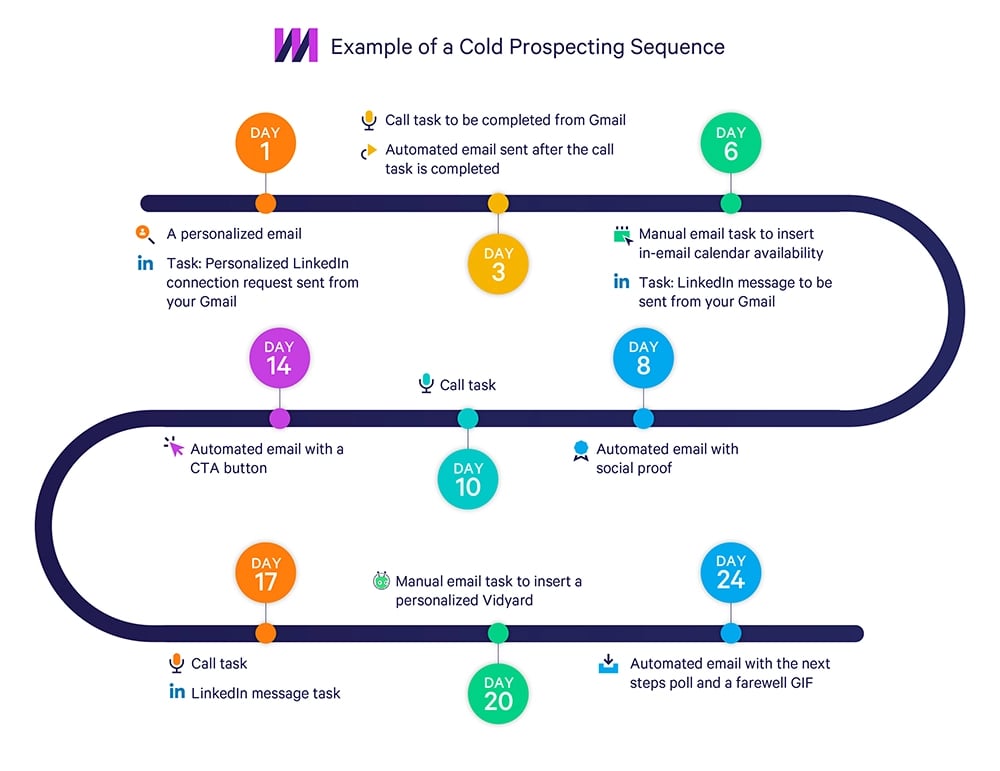
By researching your buyer persona, you’ll discover what channels they prefer to engage with and how. It’s your job to engage them when and where it suits them best.
Keep your sequences varied with email, video calls, voicemail drops, phone calls, LinkedIn, and text touches. If you’re using Mixmax, you can do it all right from your Gmail inbox without switching between tabs or tools. Plus, you can use the sidebar to share and collaborate with colleagues.
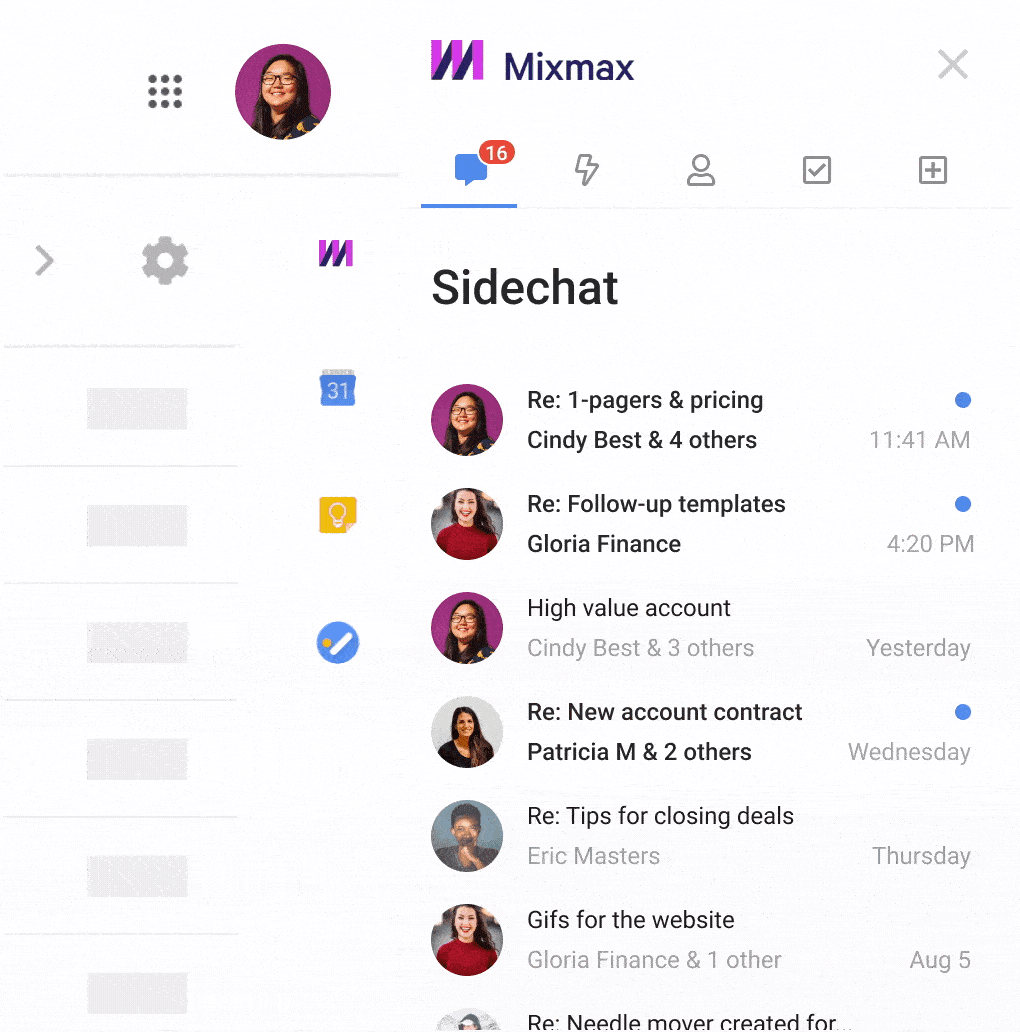
Strategy # 7: Use sales enablement and engagement to empower your teams
For reps to accelerate sales, they’ll need streamlined internal processes that get them all the information they need (sales enablement) and quality external buyer-seller interactions (sales engagement).
Sales enablement means equipping your sales team with the skills, tools, knowledge, guidance, and resources they need for prospecting and engaging with buyers at every point of the cycle and beyond.
Empower AEs with all the data they need at their fingertips during calls and conversations with the following tools:
- DealHub: Revenue platform that enables connected workflows and streamlined management of price quotes, contracts, and subscriptions.
- Mindtickle: Integrated sales readiness platform that provides sales training, coaching, performance management, and conversation intelligence insights.
- Bloomfire: Searchable knowledge management platform that makes it easy to find, share and collaborate on your organization’s internal knowledge, insights, and content.
Sales engagement means freeing your sales reps up to focus on personalizing outreach and having impactful and insightful conversations. Automating manual and repetitive tasks eliminates busywork so salespeople can focus on selling. But never the high-value tasks humans excel at like listening and building relationships.
This means tasks like sending out reminders, updating Salesforce, and working out when to follow up with prospects won’t clog up reps’ schedules, so they can focus on getting more deals in the pipeline. Meanwhile, you can build repeatable, scalable processes so your deals follow a specific workflow.
Sales engagement solutions also give you data-driven insights about interactions with potential customers so you can track each stage of the sales cycle and understand how messages, content, and timing impact the buyer experience.
Sales engagement platforms like Mixmax make life easier by syncing with your CRM so you can access potential customer data, logs of previous sales activity, meeting notes, etc., right from your Gmail inbox—and you know it's always up to date because you’re not relying on overworked sales reps to input or update it all manually.
Strategy #8: Set up a solid tech stack
For effective sales acceleration, you’ll need to leverage top-notch tools that set you apart from the crowd and up for success.
Invest in an integrated tech stack that includes a sales engagement platform, and dedicated tools for researching prospects, finding and verifying contact information, dialing, and automating tasks. This is essential to speed up research, list building, outreach, and follow-up.
We’ve already mentioned sales prospecting tools for building contact lists, researching prospects and their companies, and tracking down high-intent prospects above. Now, let’s take a look at sales acceleration tools that helps reps do and sell more.
Our top engagement tool picks are:
- Mixmax - An all-in-one sales engagement solution that allows busy sales teams at fast-growing companies to perform personalized outreach at scale. It includes features like: customizable sequences, templates, rules, in-email calendar links, dialer, GIFs, polls, surveys, and more.
- Dialpad - AI-assisted video meeting software, sales dialer, and messaging tool that integrates with Mixmax.
- Vidyard - Video software that allows you to easily record, share, and track videos right from your browser, desktop, or phone, and send them via Gmail or Outlook thanks to the Mixmax integration.
These tools automate tedious or repetitive manual tasks, help with timely personalized outreach, and deliver actionable data-based insights so can improve the process.
When investing in tech, always think about whether the software will help you achieve your goals—and whether it fits with your existing tools, prospecting processes, and team’s expertise level.
That’s why we designed Mixmax as an easy-to-install platform with an intuitive, user-friendly UX, so your sales reps can get up and running in minutes.
Get ready for liftoff
Sales acceleration lets your sales reps get on with their real job, rather than becoming professional task-jugglers as a side hustle.
Use the tips outlined in this article to build trust with your prospects and accelerate the sales process.
Then, use tools like Mixmax to reduce the number of interfaces you have to use, automate manual tasks, schedule meetings, and personalize your outreach. This saves time and frees sales reps up to really engage with prospects and effectively move them along the pipeline.
By using these strategies, your sales reps can stop feeling like a traveling circus of task-jugglers and start feeling like true sales accelerators.
FAQs about sales acceleration
How do you accelerate sales growth?
To effectively accelerate sales growth, use the following 8 steps:
- Set and measure clear goals
- Do killer research
- Go deep into prospects’ pain
- Build a quality pipeline
- Build trust and credibility
- Use multi-channel sequences
- Use sales enablement and engagement to empower your teams
- Set up a solid tech stack
What is the goal of a sales acceleration strategy?
The goal of a sales acceleration strategy is to help your sales reps work more effectively at the deal level and beyond. They help reps engage high-quality prospects and automate manual or repetitive tasks, to give them back more customer-facing time.
What do you need to accelerate sales and business activities?
To accelerate sales and business activities, you’ll need an integrated tech stack. For tracking down high-intent B2B prospects and understanding their pain and challenges, use:
- LinkedIn Sales Navigator
- Crunchbase
- G2 insights
For building contact lists and researching prospects and prospect companies, use:
- ZoomInfo
- LeadIQ
- Lusha
For sales engagement use:
- Mixmax
- Dialpad
- Vidyard


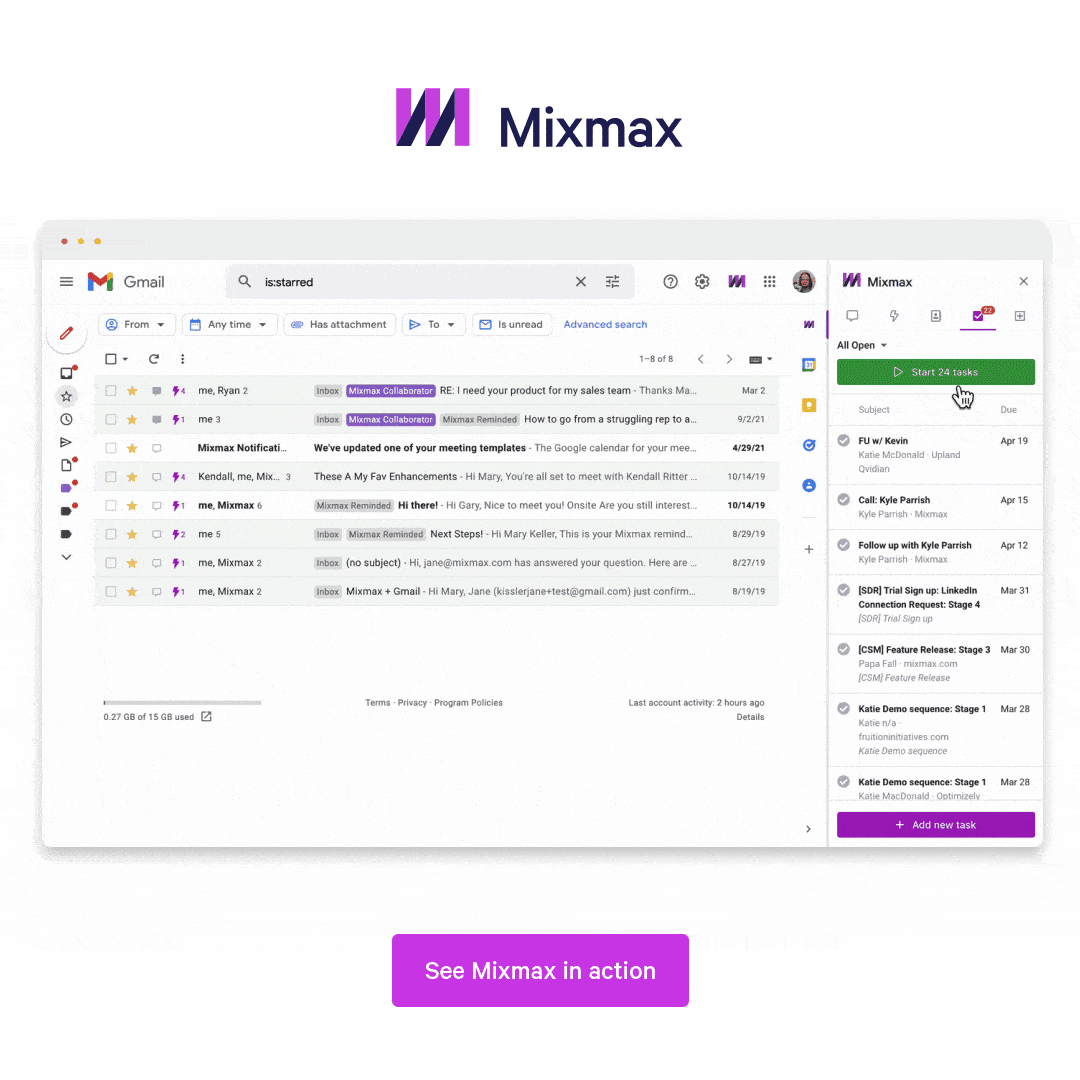

.png?width=450&height=250&name=Episode%20Graphic%20(1).png)
